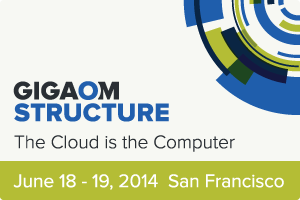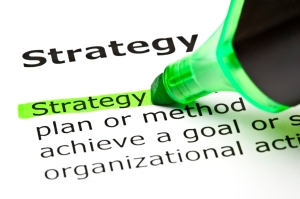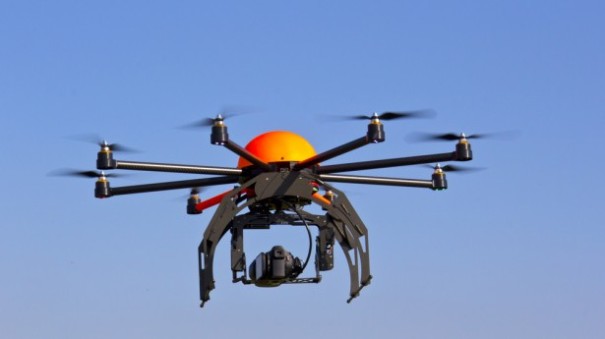Great write up on Zerto,
Future Patterns of Innovation
 Since the first IT systems were invented, IT systems have helped to automate business processes and IT will continue to do this in the future but now IT will become a stronger force in the quest for new business opportunities.
Since the first IT systems were invented, IT systems have helped to automate business processes and IT will continue to do this in the future but now IT will become a stronger force in the quest for new business opportunities.
The terms big data and analytics are used heavily in the industry at present, but the fact remains have we stopped to consider what this actually means?
Data is being driven to drive growth in business now and this data is only set to expand in the future with the pressure for business executives to find new innovation’s is hit and miss often because they are not equipped for out the box thinking and compounding that is the fact that the business is organised to support one way of working and are not adaptable to new innovation.
Idea in brief, the challenge for businesses is that established large companies traditionally are bad at finding new ways to make money but these large companies own or have access to vast sets of information that could be used to expand existing business or create new ones. Often what starts as an extension of a business will in fact become a separate business line once successful.
“In short we know we can obtain the answer from technology we just need to ask technology the correct questions.”
So lets look at the opportunity in the market place for this and place in to context the addressable market. Cisco has been a big supporter of the IOE (Internet of Everything) and if you look at the figures its easy to see why. Cisco Consulting predict that the IOE will have an addressable market from 2013 – 2022 of $19 Trillion….yes Trillion for both private and public sectors alike. Perhaps the most alarming part of that phrase for a business is the size of the opportunity and the fact that we are now in that window or opportunity.
So first lets look at what the IOE is: “The IOE is the networked connection or people, process, data and things”. This is already in our everyday lives, do you have a smart meter at home monitoring your energy usage and billing you? Have you adopted a smart box in your car to calculate part of your insurance premiums? The fact is that this idea has been around since the mid 2000’s, what is accelerating this connected network of everything is the advancement in connectivity technologies (4G now & 5G in the next decade), numbers of devices and more recently wearable technology. What is now an advancement is the tools we have in IT to analyse this data.
An early example of such connected technology is Rolls Royce who in the mid 2000’s used engine health management to identify engine related problems at an early stage thereby optimising maintenance and repair schedules. This data was taken from sensors in the engine and the effectiveness of this allowed Rolls Royce to adopt a new business model on how they charged their customers thus giving them a competitive advantage. To expand this idea further Rolls Royce could sell this platform as a service to other such manufacturers across different industries, automative, marine, power etc.
So lets fast forward to the present day and look at what companies are doing now to use transmitted data to optimise their business. One of my favourite examples of this is the UPS case study who used software to map out all their delivery routes and decided to not allow their delivery trucks to turn Left. Sounds bizarre doesn’t it allow me to explain, UPS in the US has 1000’s of delivery trucks and optimising their route both in time and cost savings is key to the businesses bottom line. In the US to turn left you have to first cross an on coming lane of traffic which is a safety concern but more critically it takes time as you have to wait for other traffic to pass. UPS found that programming their mapping software to only allow right hand turns (in US you can turn right on a red light) they shaved 20.4 million miles off the routes, delivered 350’000 more packages and diminished CO2 emissions by 20,000 metric tonnes. That’s an impressive bit of out the box thinking and this was done using software which tracked the delivery trucks and allowed them to analyse different models of delivery.
Along the same lines another example is Vodafone who partnered with Tom-Tom, Vodafone can detect which of its subscribers are driving, where they are and more importantly are they stuck in traffic. Vodafone realised they had this data already available to them from the range of devices they sell as most devices transmit your GPS location now, and realised this is a new line of business which we can sell on to people who want this information such as Tom-Tom who give traffic diversions to end users.
So you can see how technology is enabling lines of business and current process improvements and cost savings.
Let’s take a look more closely at the IOE and in particular the medical sector. The medical sector is taking a huge advantage of using wearable technology for all kinds of possibilities, and rightly so as the medical sector is extremely slow to change and when you think of visiting your doctor the fact that you have to phone/email/online a meeting, then explain your symptoms and then the doctor prescribe you something based on the tools he or she has in their office at that time. What if you were wearing a jumper, bracelet, watch that monitored all your health statistics and then alerted you when you need to go the doctor, but behind the scenes the device has sent all your data to your doctor allowing a more accurate diagnostic and health profiling of you?
“Lets develop the idea, why even go to the doctors? With the invention of Google Glass and Facebook Oculus and immersive reality, why couldn’t your doctor appear on your google glass and consult with you online and have your medication posted to you which you need?”
The scope for this is endless, the focus at the moment is on medical heavily but that has not stopped more everyday applications, for instance in Finland sensors are placed in garbage cans which instruct the collection company when they need emptying saving over 40% in waste savings collection.
This industry potential is huge and I can see this accelerating even further as the technology and imagination develops.
So what does a business need to do in order to capitalise on these areas? It starts with asking some fundamentally basic questions;
What data do we have?
What data do we have access to that we are not capturing?
What data could we create from products or operations?
What helpful data could we get from others?
What data do others have that we would like also? can we collaborate?
I work in IT and mostly in the areas which are business process automation and although that will continue the ideas we have discussed above are where the real movement is coming from and where the technology market is going, by asking yourself the above questions you can start to address your future of innovation.
“To relate back to the title of this article, the future patterns of innovation, its already here the question is how are you going to use it?”
Disruptive Innovation
Disruptive Innovation
 Definition: “Disruptive innovation is a new innovation which creates a new market and value network, which disrupts exiting markets and value networks eventually displacing an earlier technology”https://media.licdn.com/mpr/mpr/p/2/005/06b/0ee/121de4f.jpg
Definition: “Disruptive innovation is a new innovation which creates a new market and value network, which disrupts exiting markets and value networks eventually displacing an earlier technology”https://media.licdn.com/mpr/mpr/p/2/005/06b/0ee/121de4f.jpg
In contrast a sustaining innovation does not create new markets or value networks but is simply an evolution/improvement of a product over time.
To fully qualify as a disruptive innovation it has to change an entire market. Lets take an example the first car was a technological revolution but it was not disruptive innovation due to the fact it was a high priced luxurious item and did not disrupt the market which a horse and cart/Carriage was competing in. It was only when Ford made the Model-T that it was a disruptive innovation as it changed the market and displaced the horse and cart/Carriage as it was affordable and accessible.
So with that in mind and looking at today’s technologies which can we class as a truly disruptive innovation?
EMC have come out with many recent technologies which have been disruptive but in my view sustaining innovation, such items are XtremIO is an example which is a evolution of all flash arrays.
What I believe is a disruptive innovation is ScaleIO which is looking to disrupt the storage market and it seems odd that EMC would look to disrupt their own business in such a way. EMC is a vast amalgamation of companies smartly acquired over time to define a strategy, but ScaleIO seems to directly impact the storage industry in which EMC is so dominant.
Lets look at this simply, ScaleIO is the convergence of storage and compute in to one tier leveraging existing application server local disks, running on any hardware and major OS. The key element here is “Storage” the ScaleIO removes the dependency for external SAN storage which can be costly & complex.
Lets look at some of the figures also 1M IOPS from 8 nodes and 11M IOPS from 53 nodes! When you couple this with up to 80% reduction in costs, as you do not need dedicated external storage, SAN switches, power, cooling & HBA’s it starts to look extremely positive especially considering this can scale to 1000’s of nodes, is elastic and also resilient with self healing.
So what EMC are doing is actively pushing a technology which could disrupt their own mainline of business which is storage and they seem to be moving ever more to the new model of commodity hardware and intelligent software, which is positive as they are adapting to the times and leading the charge on the new world of IT. Some argue that EMC has too many acquisitions but I would counter that, I think EMC have admitted they cannot out pace/develop everyone so it is smart to acquire technologies which are of interest.
While ScaleIO is in its infancy at present in terms of being taken on board by large enterprises, I believe that sooner or later companies will be looking to remove their complex & costly external SAN storage and adopt a technology similar to ScaleIO.If not completely removing this at least displacing a significant part of it.
In recent times I cannot think of a technology which made such a disruption, the only one that springs to mind is visualization at the server layer which truly was a disruptive innovation.
So back to the start of this article where I stated what a disruptive innovation is, when you look at what ScaleIO is looking to achieve, displacing an existing storage market, creating a new market and value network it ticks all the boxes of disruptive innovation in the sense that it will truly change IT in the future.
For more information please see: ScaleIO
CloudBolt Software administers your IT, no matter where it runs
Interesting startup around cloud management, this industry sector will only get bigger & more competitive
Repeat after me: cloud computing is a huge, transformative thing, but not every company runs everything in the cloud. Most still have their own servers and client-server applications running, as well as god-knows-what in the cloud.
 So a tool that makes it easy for IT people to spin up jobs in their own server room or on Amazon(s amzn) Web Services could be a very big deal. That’s what CloudBolt Software promises. And it’s also why Gigaom selected CloudBolt as one of seven Structure Launchpad finalists for this year’s event, which takes place next month in San Francisco.
So a tool that makes it easy for IT people to spin up jobs in their own server room or on Amazon(s amzn) Web Services could be a very big deal. That’s what CloudBolt Software promises. And it’s also why Gigaom selected CloudBolt as one of seven Structure Launchpad finalists for this year’s event, which takes place next month in San Francisco.
“We take an agnostic approach to customers’ IT infrastructure,” Justin Nemmers, CloudBolt’s EVP of marketing, said in an interview. The product works via connectors with popular configuration management tools including Puppet (see disclosure) and Chef, as well as management products from Hewlett Packard (HP Server Automation and Operations Orchestration) and VMware(s vmw) (…
View original post 280 more words
EMC buys secret chip maker DSSD
A clever purchase and further confirmation of EMC’s intent in this Flash market
EMC kicked off its annual EMC World shindig by announcing that it is buying DSSD, the hush-hush chip startup funded by Sun co-founder and Silicon Valley superstar Andy Bechtolsheim.
EMC CMO Jeremy Burton announced the news Monday morning in Las Vegas.
Here’s the EMC statement:
“DSSD has been quietly developing an entirely new tier of flash storage designed to help companies store and analyze the unprecedented amounts of data stemming from mega trends like social, mobile, cloud and Big Data. The DSSD architecture promises ‘game-changing’ performance for I/O-intensive in-memory databases and Big Data workloads such as SAP HANA and Hadoop.”
DSSD was founded four years ago by Jeff Bonwick and Bill Moore, both of whom have experience building storage operating systems. EMC ledDSSD’s Series A investment round.
Here’s how Gigaom’s Stacey HIgginbotham described the company’s work a year ago:
” … the startup is building a new type of chip…
View original post 123 more words
Times there a Changing…
“The one who follows the crowd will usually go no further than the crowd, the one who walks alone is likely to find themselves in places no one has ever been before”
With EMC world running this week in Las-Vegas and another raft of announcements made, I thought I’d post a blog on the new technology and more importantly the terminology which is currently in the market place. It seems the market is full of software defined messages at the moment, and this is a good thing. It means that as end users we have choice of what platform/model we adopt and use, but too many choices can be over whelming.
You may have seen that last year at EMC world EMC announced ViPR the software defined data centre message. Over the last 12 months ViPR is making traction in the market place. But lets take a step back and think what is ViPR’s aim? In my view it is to automate and do what we do today only better, the whole point of having something defined/automated in software is to improve what we do today and automate where we can. One person once summed up SDDC for me pretty well, and simply stated “Software Defined is simply doing for the data centre what Virtualisation did for the server layer”. The concept to understand with ViPR is that its application centric which means the storage services are aligned to the applications.
ViPR has just recently had support extended to HDS as well as NetApp, which is a great in road for the industry as it is the only product currently aimed at this space and trying to abstract, automate and pool resources. If you are interested in ViPR go to http://www.emc.com and download the trial which is a great insight in what this product achieves.
Okay so we have discussed one element of SDDC but this is only the storage layer, what about hardware what do I run this software on? Personally I don’t think the industry is too far away from having standardised appliances which run specialised software for your feature/functions. The server industry is now pretty much X86 and we will not be far from “Commodity” in the coming years for compute, network and storage. This means as a customer you can purchase “White box” hardware and build the software stack on this yourself such as Open Stack and a virtualisation engine or you can buy an appliance which comes already built.
EMC just announced EMC ECS (Elastic Storage Compute) EMC ECS which is exactly the latter of the paragraph above. This was previously known as “Project Nile” and is a hyper scale cloud solution which promises lower TCO costs than moving to a public cloud but being a private cloud solution is more secure. Now let me do some jargon busting here, the EMC ECS is designed for what EMC dub the “3rd Platform” this is the mobile, social and big data platform where we are managing/running millions of diverse applications rather than the traditional server client model and traditional applications.
What is a great story with ECS is the fact it can be converged with existing Private or hybrid cloud models and will boast a whole host of features from automated provisioning, self-service & 28% lower TCO than Google or Amazon. These are bold statements but I believe this is genuinely pioneering. Lets think about what I said before putting advanced software on to commodity hardware, thats all ECS is, its EMC ViPR & SRM running on standardised servers, network and storage providing seamless application provisioning and huge scale (up to 2.9PB). This is clearly aimed at service providers or companies who are considering a hybrid cloud model as a lower TCO for an environment, in my experience this year the word “Hybrid Cloud” is on everyone’s mind and is starting to ring home with companies as budgets and staff become ever more stringent.
On we go to another option or choice, do I simply employ a hybrid cloud model and off load some of my workloads to a lower TCO option in the cloud and let someone else look after it? In this space again there are an abundance of providers, newest to the market being VMware VCHS, or do I simply go to a full public model?
Another choice is do I go converged and buy everything as an appliance on specialised Hardware? Nearly every vendor in the market place now offers something like a VBLOCK.
I think you are beginning to get the idea, the market is full of choice now and choices that need to be carefully considered. If we get too lost in cost and functionality then we may lose sight of what it is we require from SDDC which is simplicity, scalability and speed of provisioning. As IT departments move to a DEV OPS environment more and more technical functionality speciality will be lost to service delivery and management, and this change is being forced by the nature of the world we live in today. Everything must be faster, more efficient and simple, managing large complex multi vendor infrastructures will start to become cumbersome and too costly. I think what is unique here is EMC have acknowledged the “Cloud” from an early stage and can now offer you a fully built cloud solution or a build it yourself option such as ViPR and your choice of commodity HW & Open Stack or something similar.
The last and final choice is, “When do I choose a direction?” This is a difficult choice the market now is full of options for all services “Cloud” and these services are ever evolving. Look how far ViPR has come from one year ago being a piece of software dipping its toe in the environment to now where it is fully embedded in an appliance and offered as “Cloud in a box”. What I would say or advise on this subject is look at where you are now and the plans of the business. This eludes to what I stated earlier, “what is the businesses primary function?” lets take a car manufacturer their sole purpose is to manufacture and sell a car for the greatest % of profit and gain as much market share as possible. If the business has stated they need to be smarter or more efficient to keep up with competitors then the business starts to look at gains/improvements which can be made across the board, lets not forget IT is a supportive function of the business.
I have worked with many customers who have a whole raft of solutions they have either tried & tested, are looking at or have heard of. My advice would be look at where you are now and the coming 3 years and assess what you can do. EMC Adaptivity can look at what applications your business uses which are suitable for certain cloud platforms, private, public or hybrid and classify what cost savings & efficiencies you can expect to gain. This is a great tool as every IT professional I have met has stated to me “I am unsure whether that application could exist in the cloud” and as we all know application landscapes are large & complex.
Once you know where you are it is easier to then make a decision on the best solution going forwards which will lets face it come down to end user experience, this is such a huge factor that many overlook. My final thought on this is EMC are daring to be a little different especially with products like ECS, ViPR and Scale IO, they are changing as a company and are always on top of the curve. With that in mind, EMC one of the largest hardware vendors in the world has admitted “Times they are a changing” and have adapted to the new demands in the market place, as end users we should adopt and try these new technologies as without trying we will not be any different from competitors or gain any new benefits.
The Illiterate of the 21st Century
“The illiterate of the 21st Century will not be those who cannot read and write but those who cannot learn, un learn and relearn”
I am guilty of this as much as anyone else, in my role we constantly learn new technology, derive that it is the best technology in the world and that it can change everything and then a new shiny object comes along and the focus switches. Throwing technology at an issue or opportunity fills a hole but does it drive a strategy? I would argue no, the IT world has been fed the word “Cloud” now for years and now everyone is on board with cloud and accepts this as a technology and a viable way that the world of IT is heading, most are now looking to IT professionals and asking “How do we get there?”
This is a common question and a vendors immediate response will be “Well this technology can definitely solve this”. My experience so far has taught me a few things, IT roles are changing they will become more strategy driven and service orientated yet most companies I now come across are still defining their strategy and really value input in to this. A strategy is a complex timeline of events to reach a goal which has a direct outcome to the business whether this be something as generic as saving money or generating new business.
The important term here is “business” the people who sign off the cheques and allow business units to pursue technologies. The strategy does not start and end with an IT department for Cloud. It should be transparent across a business yet here is the inherent problem, because “Cloud” is such a common term now people read all about the good and bad stories of cloud which can be positive and negative thus affecting a strategy.
So thinking about “Cloud” we all know the technology is there but how does a business understand the change it will bring?
The approach is simple, a step back from technology needs to be taken. In my experience the one element holding up large organisations moving to a cloud model which ever this may be, is applications. How does a large organisation understand 20 years of their applications, dependancies, landscapes, & feasibility for the cloud? In present years this would have been solved by a large complex consulting engagement which would tag applications, long story short it was a manual process which took 6-12 months. EMC last year purchased a company called “Adaptivity” which automates all of this but goes one step further with data classification, applicable data laws and a modern ranking of the applications suitability to be moved in to a cloud model such as Rack space or ATOS.
It is only when an organisation understands these large application landscapes that they can address the second issue of adopting a cloud utility model to effectively charge back BU’s. This is another common comment, the IT departments want to charge back but the BU’s are not in tune with this. Echoing back to the start of this post I mentioned transparency and it needs to have buy in across the business. Charge back and show back are elements which are desirable and it is only when organisations understand the true needs of the applications that they can streamline for the cloud. If a company takes an approach to “Gold” everything, so fast disks, huge memory in servers, backup, replication etc expect to pay for that in the cloud, this service costs and only once you have classified your applications can the financial areas of the business can explore the costs of keeping this in house or moving to a public cloud.
So stepping away from the technology and looking beyond software and hardware will drastically power conversations surrounding Cloud based technologies.
So back to the start of my comment on learning and re-learning, people want to embrace cloud but need guidance on this. Workshops and gap analysis studies with Cloud Strategy have been hugely popular and effective in this space, the more I run these type of events the more I learn that the cloud conversation struggles are not local but felt across the industry.
Virtual Storage Integrator (VSI) Support for VPLEX
Great plugin which should be taken note of!
Here is a FREE plugin for VPLEX that you should be using if you aren’t already.
What is Virtual Storage Integrator aka VSI?
VSI is a standard EMC plugin for VMware vCenter. Using VSI, you can drill down into specifics for EMC platforms. VPLEX was supported with the Virtual Storage Integrator pretty much from the get go for the storage visibility use-case. In other words, for VPLEX, VSI would allow you to drill down from vCenter to your vmdk to the associated VPLEX storage and then tell you which particular backend storage it was.
So what’s new
With the release of VSI 5.6, the above functionality for VSI was enhanced to now allow provisioning VPLEX virtual volumes directly from within vCenter. You can now go into vCenter and select the VPLEX cluster that you want to provision and then create virtual volumes (local or distributed), choose what consistency groups and…
View original post 60 more words
Consumer Drones & CIA Cloud?
I was fascinated to read about Amazon CEO Jeff Bezos mention two things this week in a press appearance “Consumer Drones” & “Private Cloud”. Amazon as a company still continue to impress me, they are always at the bleeding edge and tend to see or imagine a long time before the remainder of the industry catches up.
Firstly lets take the word private cloud which Amazon go to lengths never to mention. Earlier in the year I blogged about the potential rumours that Amazon were building a CIA private cloud and the implications that this could have on competitors, please see the link below.
So it seems that this was not media hype and in fact this is a reality, So if you put two and two together and think if Amazon are embarking on a large scale secure cloud with the CIA they will surely apply the lessons learnt there and be even more formidable in the market place. This is certainly a wake up call for the old school of the industry who will not move PROD & enterprise workloads in to the cloud? It seems more and more now that Amazon are targeting this sector and with their pricing model and success you would not bet against them achieving such a feat. Amazon are the dominant player in this arena but they have mostly focussed on public cloud and if they can make the CIA cloud work then surely others would follow.
The market share for cloud at the moment seems to be ramping up even more, with VMware announcing at VMworld 2013 the vCloud Hybrid services and drawing a line in the sand to target Amazon. It will be fascinating to see what un folds with this next year.
Consumer Drones?
Secondly Jeff talked about consumer drones, and this fascinated me. Small electrically powered “octocopters” (Amazon Name) will deliver lightweight consumer goods in urban areas with a distance of 10 miles. This is to drastically cut down energy costs from fuel and traffic in built up areas. The whole thing seems like something out of a Sci-Fi movie though, imagine a drone landing on your front garden delivering a package, I think it would be fantastic. Obviously this is all still in the R&D phase right now and there would be endless amounts of testing and red tape to get through but just think if anyone can do this it would be Amazon!
Food for thought anyway!
The consumption of digital media
I recently read a post which talked about are artists dying due to the consumption of digital media, this got me thinking. If you have ever seen the film WALL-E the film it is about an adorable trash robot which in habits an earth. One interesting insight in to the future with this film were the scenes from the cruise spaceship. It featured people floating around on chairs with a screen of some sort in their face and they lived their life through this screen oblivious to their surroundings.
Got me thinking about how much time I spend with a screen in my face, IPAD, IPHONE, laptop etc, and mostly we all work with computers at work but we interface so much now with others via devices its pretty remarkable. I think that we do live in a golden age of technology at the moment and no more so is it demonstrated by me writing this blog and reaching out to you! We live in a world where we can consume several streams of information, from news, Twitter, Facebook, LinkedIn, Candy Crush saga, 4 Pics one word and thats just while we are watching the TV at night time!
There was recently a programme on the BBC about the golden age of Jet engine technology and how it shaped the world, but our modern jet engine is the internet, it truly is a remarkable time where there are new technology startups and interesting technologies spawned consistently. I would class us all by now as digital natives, we interface with technology on a constant basis and as a trade off to that we learn and develop new skills but also learn that there is choice in what we consume, if something is not good enough we simply seek an alternative.
How common is the above scene, engrossed in a device communicating to others yet others are stood at the side of you! This constant plug in to the entire world through several different outlets on devices is draining. In my job as in probably most of yours my phone is my life when I am not talking on it I am emailing and at night time we all tend to sit there and use Facebook, Tumblr and Twitter etc communicating even more. We never switch off which I think is why we are slowly heading to consuming information just like the people in WALL-E, we are probably 90% there now anyway!
For example, next time you go to a concert or even a fireworks show just look at the mass of screens surrounding you, it seems that now the norm is to film and watch through your phone and then replay later, what happened to just living in the moment and enjoying what it is you are experiencing? I have already started to come off Facebook due to its new privacy laws which make your content searchable despite any restrictions you place on there, and started to leave my phone out of reach in the evenings, and you know what it works, life is less stressful and not being plugged in to an online world every waking minute is hugely refreshing! I recommend you give it a go!







